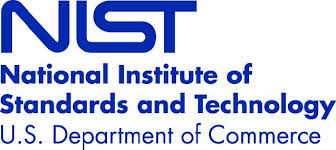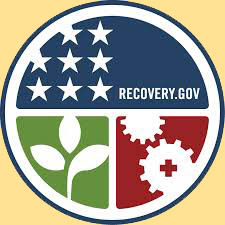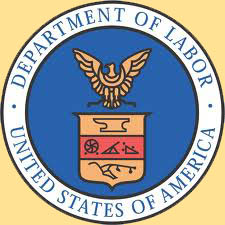
March 2014
|
The Mission of the Economic Development Administration (EDA) is to lead the federal economic development agenda by promoting innovation and competitiveness, preparing American regions for growth and success in the worldwide economy. The agency has a competitive grant process and has established the following investment priorities as criteria: collaborative regional innovation, public/private partnerships, national strategic priorities, global competitiveness, environmentally sustainable development, and economically distressed and underserved communities. Message From Acting Assistant Secretary
|
 |
|
Clarence Anthony, Executive Director for |
Clarence Anthony served as the Mayor of South Bay, Florida for 24 years. He is known as a creative and thoughtful leader in his community. He is considered an expert in citizen engagement and techniques that build a "sense of community" within cities. Mr. Anthony has been on the forefront of politics in the United States and internationally for the past 20 years, culminating with productive presidencies of the Florida League of Cities and the National League of Cities (NLC), respectively.
As NLC President, Mr. Anthony serves as the chief spokesperson of the oldest and largest organization of municipal officials in the United States, representing more than 1,600 cities and towns, as well as 49 state municipal leagues that are members of NLC. He also served as First Vice President of International Union of Local Authorities and as Founding Treasurer of United Cites and Local Governments (UCLG), the international voice for local governments, for four years. He also served as the Interim Manager for UCLG. He has continued his involvement with NLC by serving on the Building Committee.
Prior to his appointment as Executive Director of NLC, Mr. Anthony served as President of Anthony Government Solutions, a consulting firm focused on providing solutions to government and private sector organizations on issues affecting the community, strategic visioning, policy development, business development and management restructuring.
He holds a Masters Degree in Public Administration with specialization in City Growth Management policy from Florida Atlantic University.
Question: Sustainability is an important concern in economic development. How can one take what you’ve learned through the Sustainable Cities Institute and apply it to communities undertaking economic development activities?
There is a recognition that better air and water quality directly equates with how residents value a city. Sustainable practices and planning can help to create and maintain that value. City leaders take a holistic approach to make an environmental agenda work with a jobs agenda. Jobs and sustainability are not mutually exclusive. For example, we see cities perform transit orientated development. They are ensuring the mobility of the residents and creating access points for them to engage in the rest of the city. With this we are seeing mixed use development around transit that are spurring on greater economic development.
Q: NLC recently called for more federal partnerships to drive innovation and opportunity. What do you see as the federal government’s role in innovation, and how can its involvement drive meaningful advancement across industries?
The federal government plays a leadership role in infrastructure and transportation investments that spur on development around transit and increases efficiency for businesses and people. The Presidential announcement of funding for resilience is exciting as it would mean less rebuilding after extreme weather events.
The federal government spurs on development in programs like the Community Development Block Grants, which pairs federal seed money with local dollars to transform communities. TIGER grants are great as they seek out innovative projects and invests in them. Then other communities can learn from them in the form of best practice sharing and lessons learned.
Research and development dollars that are sent to universities help spur on development around those institutions. Students, faculty, and associated businesses can help create vibrant neighborhoods and the research developments can lead to new private sector businesses and new markets that support cities across the country.
Q: Comprehensive immigration reform is another policy focus for NLC. How do you view comprehensive immigration reform benefitting the American economy and supporting economic development?
Immigrants contribute greatly to our nation and we should encourage their involvement in the national economy. They start businesses, buy homes, and contribute greatly to the neighborhoods they reside in. When they start businesses they provide jobs, stimulate growth in their markets and help to revitalize neighborhoods. We need to find ways to bring them out of the shadows and into the social and economic fabric of our cities. They also bring new ideas and break down cultural misunderstandings, which spark creativity to make new discoveries and build new products.
Q: In NLC’s experience working with municipalities on issues pertaining to economic development, what would you say are the keys to successful economic development?
The most critical way that cities can drive economic development is by supporting small businesses, leveraging the capacity of entrepreneurs, and truly being a partner – not an obstacle – for growth. Whether it’s streamlining regulations, helping business owners establish a better web presence, or helping new businesses locate in formerly vacant properties, there are lots of ways that cities can utilize their resources to establish a stronger local economy.
SUCCESS STORY
Sowing the Seeds of Success: Kansas Wheat Commission
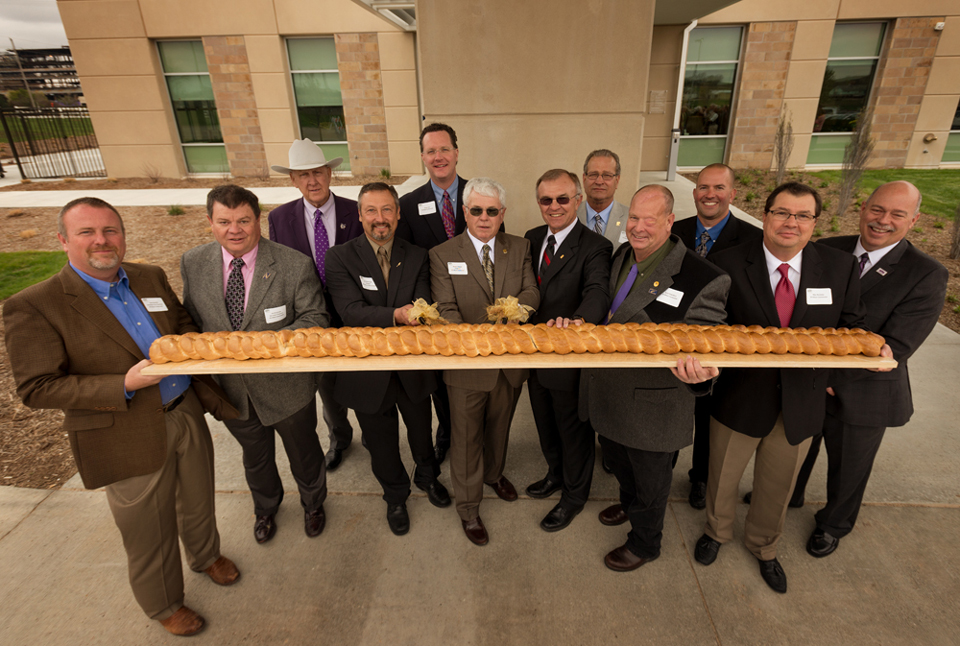 |
|
Bread Cutting Ceremony at the Opening of the Kansas Wheat Innovation Center. Photo Courtesy of the Kansas Wheat Commission |
In the movie The Wizard of Oz, Dorothy clicks her heels together three times while saying “there’s no place like home.” She is leaving the magical Technicolor world of Oz for the familiar muted tones of home Kansas. Recently, thanks to the efforts from the Kansas Wheat Commission, there truly is no place like Kansas – especially if you’re talking about agricultural innovation.
Recent changes in weather patterns have hit the wheat farmers of the American plains hard. Decreased rainfall, increased temperatures, and generally more severe weather have made it difficult for farmers to keep pace with increased global demand for wheat. And the demand is staggering – America wheat brings in more than double the money that corn, soybeans, or beef and veal do. The Kansas Wheat Commission realized there was opportunity here, and they sought to bring together industry, educational institutions, and federal agencies in order to create the Kansas Wheat Innovation Center (KWIC).
They had the building, but not the crucial lab equipment needed to make the building function – and to secure a critical grant from the National Science Foundation. With a relatively modest seed grant of $440,000 from EDA for the equipment, the Commission secured a total $10.3 million to grow a center for research and advancement. Located in the Kansas State University Grain Science Campus, the Center houses a feed mill, a test kitchen, a state of the art greenhouse, and some of the brightest minds in food science to find ways to make wheat more resilient to drought, extreme heat, frigid cold, and myriad of other issues affecting crops.
“We are very proud of the work that we’re able to do, and we are very thankful to EDA for helping make our Center possible,” said Justin Gilpin, Kansas Wheat Commission, CEO.
But they don’t just work to make crops more resilient – they are also working to preserve varieties of wild wheat to ensure future diversity of crops. This sort of work not only helps to keep America’s bread basket full, it also feeds the world. KWIC's collection of genetically diverse wheat is unique in the world. Scientists now have the ability to use advance technologies at the KWIC to identify traits for drought and heat tolerance, disease resistance, nitrogen utilization, and nutritional benefits.
EDA’s catalytic investment in the heartland is making a real difference. The ground-breaking research and advancements taking place at the Innovation Center can be applied globally to increase crop production and end hunger. Universities and private companies across the region and the world will benefit from concentrated efforts at the KWIC to ensure the stability and profitability of future wheat crops. According to the Kansas Wheat Commission, operations at the KWIC will bridge fundamental research to commercial applications, leading to food security, job creation, and billions of dollars in economic impact.
Oz may have been in Technicolor, but Kansas is where the magic is really happening.
SPOTLIGHT
|
|
|
For more information, visit: http://www.naco.org/newsroom/latest/Documents/2014 Legislative Conference advisory - long_0220.pdf (PDF). |
|
|
|
|
|
Topics for this year’s forum and areas of focus for 2014 include workforce development, international themes, infrastructure investment, export promotion and strategy, manufacturing, disaster recovery & resiliency, capital access, entrepreneurship, rural development, energy, and research & innovation. |
HIGHLIGHTS
Silicon Valley: The EDA Success Story You’ve Never Heard
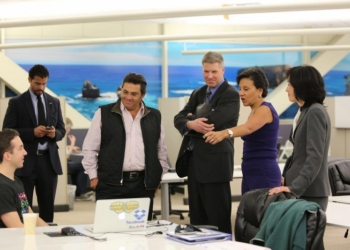 |
|
U.S. Secretary of Commerce Penny Pritzker with LinkedIn CEO Jeff Weiner during her visit to Silicon Valley |
Last week Secretary Pritzker traveled to Silicon Valley to meet with CEOs of several large tech companies, including Yahoo!, Tesla, and Google, to discuss Administration’s commitment to spurring U.S. economic growth, innovation, and competitiveness. This was the first visit to the Valley for Secretary Pritzker as a member of the Administration, but Commerce, and EDA specifically, has a long history with the region.
Everyone knows that Silicon Valley is a hub for technology, innovation, and cool new cutting edge products and services. Several of the companies born in the Valley have changed the cultural lexicon and added vocabulary to languages all over the world (how do you refer to searching the Internet again?). But, what most people don’t realize is that EDA invested in Silicon Valley before the tech boom, in effect helping to shape what the region has become.
Back in the 1990s, the semiconductor industry in Silicon Valley found itself facing competitive challenges from other rising tech regions in the U.S. and abroad for the first time. This was coupled with the closure of several major military bases that had been crucial to the region’s economy. Many felt that the area was falling behind and needed better ways to change, adapt, and reinvent itself to compete.
In 1993, Silicon Valley’s leaders in business, government, academia, labor, and the non-profit sector created Joint Venture as an experiment in regional thought and action on issues that are not constrained by city limits, county borders, or state lines – such as economic development, infrastructure, transportation, communications, education, health care, disaster planning, and climate change. Joint Venture sought to build the framework for regional thought, analysis and action to assess challenges, reach consensus on the best strategies for response and work on solutions. But, it needed some help to get things moving and applied to EDA for a grant.
In 1994, EDA provided $2.1 million to Joint Venture for the development of a strategy to diversify and strengthen the economy and to overcome the challenges caused by competition and base closures. Today, Joint Venture continues to provide a forum for collaborative regional thinking and leadership from both the public and private sectors and serves as a vibrant force in economic development in Silicon Valley.
Any region’s economy can be vulnerable. For nearly 50 years, EDA has been there to lend support and provide communities with the tools to build vibrant economies that can better meet future challenges. The next Silicon Valley may be among any of EDA’s current grantees.
|
|
|||
In This Issue
Commerce’s National Institute of Standards and Technology (NIST) Identifies Three Key Trends in Manufacturing for 2014
Building on momentum from 2013, this year promises to be a good one for the manufacturing industry. NIST has identified three major themes for 2014: 1) Industry growth; 2) Increased focus on business growth; 3) Shifting public perception. Read all about NIST’s findings. ARRA Turns 5
February marked the 5th anniversary of the American Recovery and Reinvestment Act (ARRA). But what has the effect of ARRA been on the country’s economic recovery? The White House Council of Economic Advisors was tasked with reporting to Congress quarterly on the effects of the Act. The final report (PDF) affirms that the Recovery Act had a substantial positive impact on the economy, helped to avert a second Great Depression, and made targeted investments that will pay dividends long after the Act has fully phased out. Webinar Provides Helpful Guidance on IMCPOn February 19, EDA conducted a webinar hosted by the International Economic Development Council to help potential applicants understand the Investing in Manufacturing Communities Partnership (IMCP) program. More than 400 people participated to learn more about the program and the application process. Attendees heard from and had the opportunity to ask questions of Deputy Assistant Secretary Matt Erskine and EDA Senior Advisor Ryan Hedgepeth. Note: the deadline to apply to be designated as a manufacturing community has been extended to April 14. For more information, visit the Federal Register website. The U.S. Department of Labor announced $150M grant competition to help those facing long-term unemployment to return to work
The Ready to Work Partnership grant competition will support and scale innovative partnerships between employers, nonprofit organizations and America's public workforce system to build a pipeline of talented U.S. workers and help those experiencing long-term unemployment gain access to employment services that provide opportunities to return to work in middle- and high-skill jobs. Read more on the Department of Labor's website. |

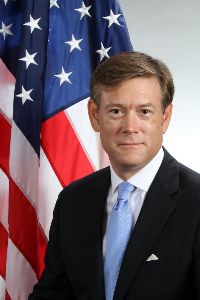 Dear Friends,
Dear Friends, March kicks off conference season in Washington, DC. Among the organizations hosting meetings in DC are: National Association of Counties (
March kicks off conference season in Washington, DC. Among the organizations hosting meetings in DC are: National Association of Counties (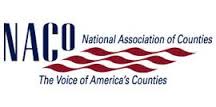 More than 1,500 county officials will stress the importance of long-term funding for the nation’s federal surface transportation program and the important role transportation infrastructure can play in America’s economic competitiveness during the National Association of Counties’ (NACo) 2014 Legislative Conference, March 1-5, at the Washington Hilton Hotel in Washington, D.C.
More than 1,500 county officials will stress the importance of long-term funding for the nation’s federal surface transportation program and the important role transportation infrastructure can play in America’s economic competitiveness during the National Association of Counties’ (NACo) 2014 Legislative Conference, March 1-5, at the Washington Hilton Hotel in Washington, D.C.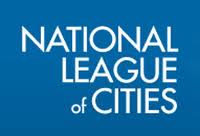 The National League of Cities’ (NLC) federal action agenda reflects the need for a new federal-local partnership to facilitate investment in our infrastructure and workforce. NLC is calling for investments in cities and their residents that encourage and take advantage of the innovation happening on the local level to drive economic growth. Other priorities for NLC include the passage of the Marketplace Fairness Act to place brick-and-mortar community businesses on a level playing field with online retailers and afford consumers more choice through fair competition as well as a new, long-term federal surface transportation program that recognizes the central role of transportation to metropolitan and regional economies and includes local voices in planning and project selection. NLC supports comprehensive immigration reform. NLC seeks to partner with the Department of Education to strengthen the education pipeline from early childhood opportunities through improved postsecondary success.
The National League of Cities’ (NLC) federal action agenda reflects the need for a new federal-local partnership to facilitate investment in our infrastructure and workforce. NLC is calling for investments in cities and their residents that encourage and take advantage of the innovation happening on the local level to drive economic growth. Other priorities for NLC include the passage of the Marketplace Fairness Act to place brick-and-mortar community businesses on a level playing field with online retailers and afford consumers more choice through fair competition as well as a new, long-term federal surface transportation program that recognizes the central role of transportation to metropolitan and regional economies and includes local voices in planning and project selection. NLC supports comprehensive immigration reform. NLC seeks to partner with the Department of Education to strengthen the education pipeline from early childhood opportunities through improved postsecondary success. Each year, the
Each year, the 